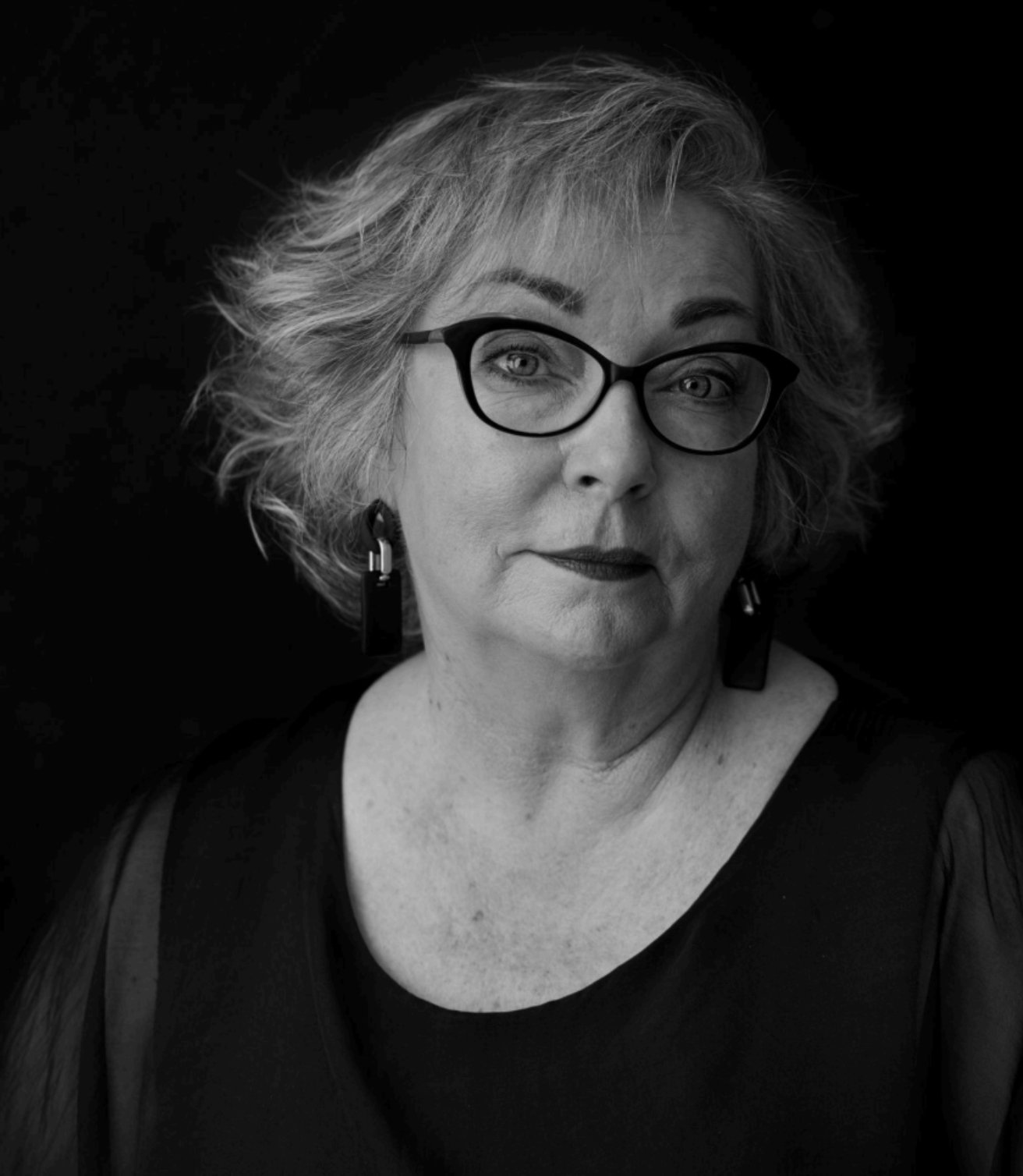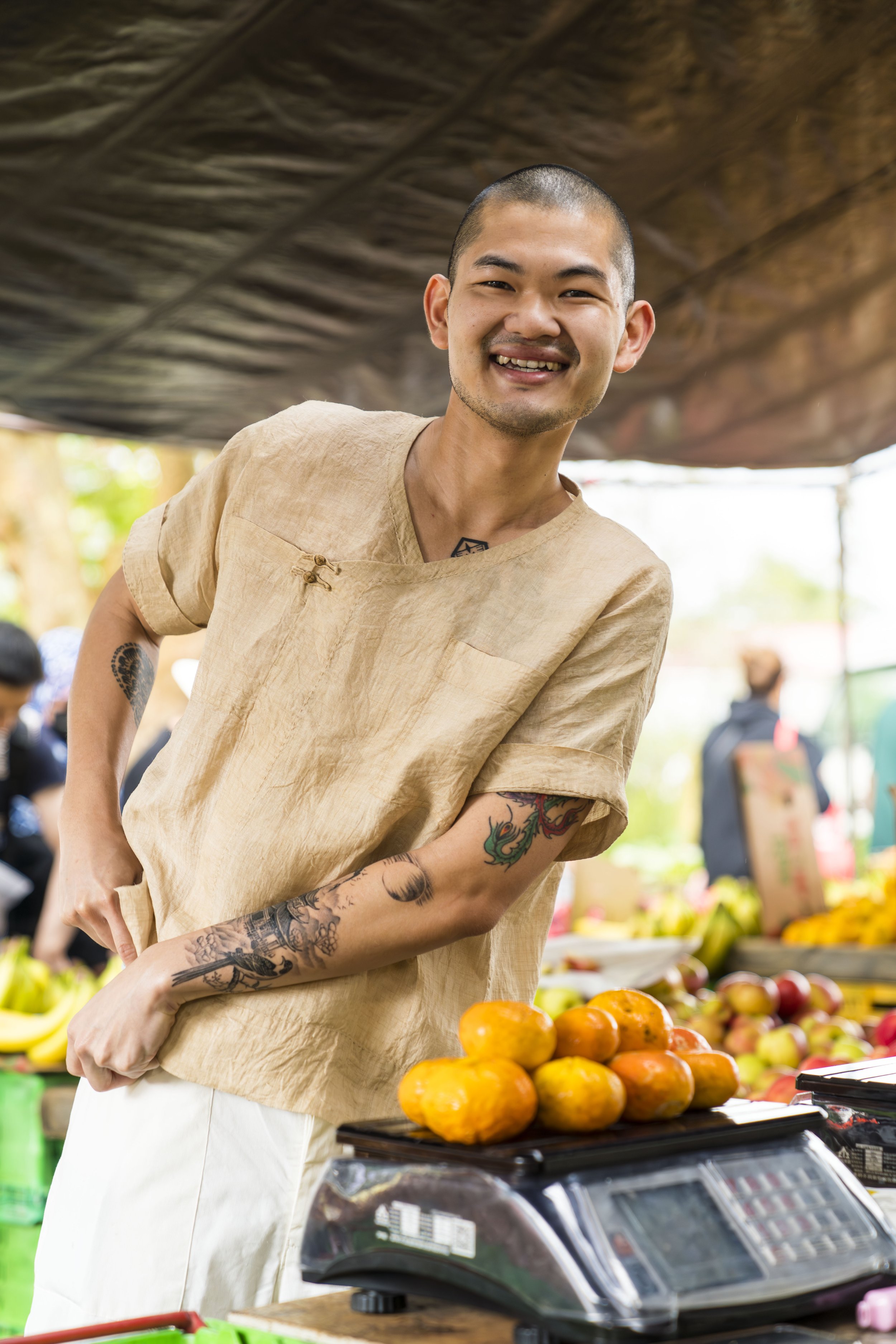Robert Oliver - Eat Pacific
Robert Oliver is a New Zealand chef who was raised in Fiji and Sāmoa. He has developed restaurants in New York, Miami, Las Vegas and Sydney, ‘farm to table’ resorts in the Caribbean and food programmes in New York City. His books Me‘a Kai (Random House, 2009) and Mea‘ai Sāmoa (Random House, 2014) were written with a development mission: to connect Pacific agriculture to the region’s tourism sector. Both were honoured in the Gourmand World Cookbook Awards. In 2014 and 2015, Robert was one of the judges in the New Zealand version of My Kitchen Rules. In 2015/2016 he co-hosted the cooking show Marae Kai Masters on Māori Television and he is now the host of the TV show Pacific Island Food Revolution, which is in its third season. In 2022, Robert was on the New Year Honours List and was awarded a New Zealand Order of Merit.
1. Who taught you to cook, and what’s the first thing you learnt to cook?
It really it was moving to Fiji that made me come alive in the food sense. The market in Suva, the exposure to dynamic Fijian cuisine, and my Mum’s experiments in our Suva home with local crops and dishes.
2. Name one of your most treasured food memories growing up in the Islands.
I really loved Indian weddings and Fijian “ magiti” or feasts. But once again I circle back to the market in Suva as the hotbed of community, food and gossip. It is one of the world's best working food markets and anyone visiting Fiji should plan to go to Suva to go there.
3. What prompted you to become a voice for the people and food of the South Pacific?
I don’t think I am. My aim is to create a platform for Pacific food voices and stories- not be one myself. My books and TV are filled with Pacific people with the real food stories. Part of my original motivation was to showcase the cuisines of the various islands in an effort to embed them into the tourism industry.
4. What is the biggest challenge facing our island neighbours and their food
systems?
There are challenges with the domination of Western style foods and food imports- but there is great hope. The original Pacific food system, We don’t need to invent anything. Rather to restore and revamp -for the modern era- the local food systems that served Pacific Islanders well for thousands of years.
“The more local a food system is, the more resilient a community is to climate, the better their food security.”
5. Can we cook South Pacific cuisine in our home kitchens?
Absolutely- there are a few ingredients you can’t get- such as nama/ limu seaweed, but you can substitute with a Japanese seaweed.
6. What three dishes from ‘Eat Pacific’ would you recommend we start with?
Oh dear- I wouldn’t prescribe in that way. Thumb through the country sections and see what resonates. You’ll be amazed at the range and depth of cuisine in each island.
7. What South Pacific tunes can we add to our playlist when we’re cooking from ‘Eat Pacific’?
Stan and the Earth Force from Vanuatu - and lots of good music coming out of Fiji.
8. What’s your ultimate South Pacific food treat?
I love going to the back of the main market in Port Vila in Vanuatu where a group of women known as the Mamas have simple cafe setups where you can eat basic and tasty local fare and chat with the cook. My friend Myriam Malao is the head of the Mama’s Association and she’s always happy for a chat and to give you some good food know how.
9. What would you most like people to know about Pacifica food/cooking?
Each island is different. The crops may overlap- but the dishes are diverse.
Robert Oliver’s Masala Fish with Green Mango Cashew Kuchela
Robert Oliver’s Masala Fish with Green Mango Cashew Kuchela This is a quick version of my favourite dish at Sangeeta Maharaj’s excellent Suva restaurant, Eden. It’s a meld of i-Taukei and Indo-Fijian flavours, and not only looks great but is also a no-fail dish. Vinaka, Sangeeta!
SERVES 4
juice of 1 lime
1 kilogram cleaned fish fillets, cut into portions — any fish you like
2–3 tbsp masala powder
sea salt
2 tbsp virgin coconut oil
3 tbsp julienned ginger
4–6 thin slices turmeric (optional)
3–4 dry red chillies, plus extra for garnish if desired
1 frond curry leaves, picked
6 cloves garlic, sliced
2–3 tbsp mango kuchela or pickle
3 cups diced firm but ripe maqo (mango; use pawpaw if maqo is out of season)
2 cups cashew nuts (raw or roasted — use peanuts instead of cashews if you prefer)
3 cups coconut cream salt and pepper
plain oil for cooking
lime wedges, to serve
Sprinkle the lime juice over the fish, then dust well with the masala powder and sea salt. Place in the fridge to marinate while you make the sauce.
In a frying pan, heat the coconut oil and add the ginger and turmeric (if using). When toasted, add the chillies, curry leaves and garlic and fry until the leaves are crispy and the garlic lightly browned.
Remove from the oil and set aside. Add the kuchela to the pan and fry until toasted. Then add about a quarter of the fried garlic, curry leaf, ginger and chilli mix.
Add the maqo and cashews and stir-fry for 3–4 minutes. Add the coconut cream, bring to the boil and reduce slightly until saucy. Taste and adjust the seasoning with salt and pepper. Set aside.
Heat a pan with a little plain oil and fry the fish in batches, taking care not to overcrowd the pan.
Place the coconut maqo sauce on a platter, top with the fish and garnish with the remaining fried garlic, curry leaves, turmeric, ginger and chilli mix.
Serve with lime wedges and garnish with extra dry chillies if desired.
Recipes and images from Eat Pacific: The Pacific Island Food Revolution edited by Robert Oliver, published by Massey University Press, RRP: $60










